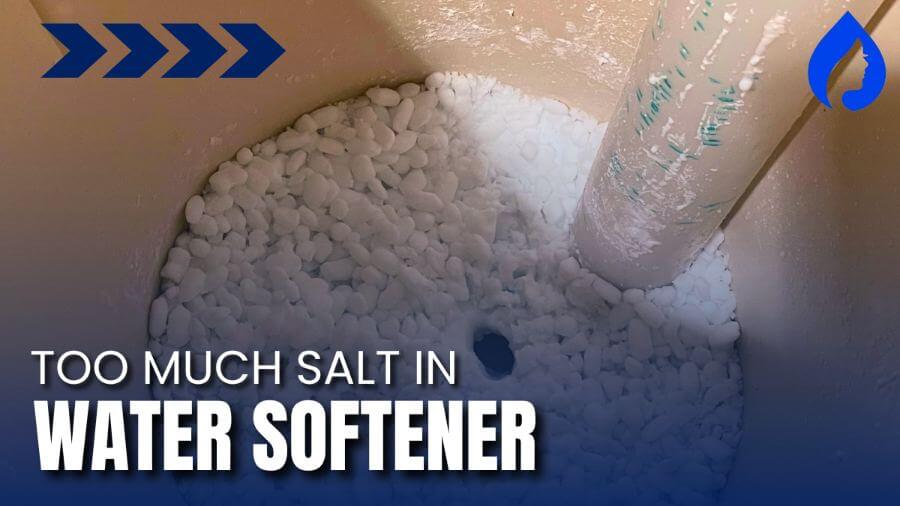
Salt top-up is important, but adding too much salt In water softener, especially if you’re filling more than 3/4th of the brine tank with salt, might cause symptoms like:
Here are some quick fixes:
Continue reading for 5 common symptoms of too much salt in water softeners and their practical solutions.
🤔What Happens If You Add Too Much Salt in Water Softener?
🧂Salt Bridging
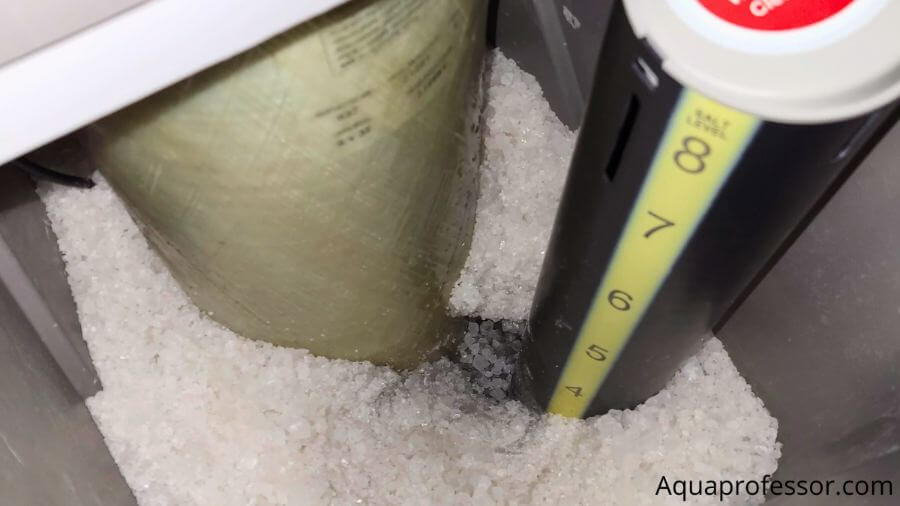
Salt bridging is identified by a hardened layer of salt crystals forming at the top of your brine tank, creating a barrier between the water and the salt beneath it.
This bridge prevents salt from properly dissolving in the water . Consequently, the brine solution necessary for regeneration can’t form effectively.
With adequate regeneration, your water softener system cannot efficiently remove hardness minerals from the resin beads, resulting in unsoftened water and decreased overall system performance.
🔁Improper Regeneration
Improper regeneration occurs as a direct consequence of salt bridging.
During regeneration, resin beads in the water softener must be thoroughly flushed with brine to eliminate accumulated hardness minerals.
Because of salt bridging, the system struggles to access enough salt to create a sufficient brine solution.
It compromises the regeneration process, leading to incomplete mineral removal.
As a result, you get hard water and all its problems.
💦No Water Softening
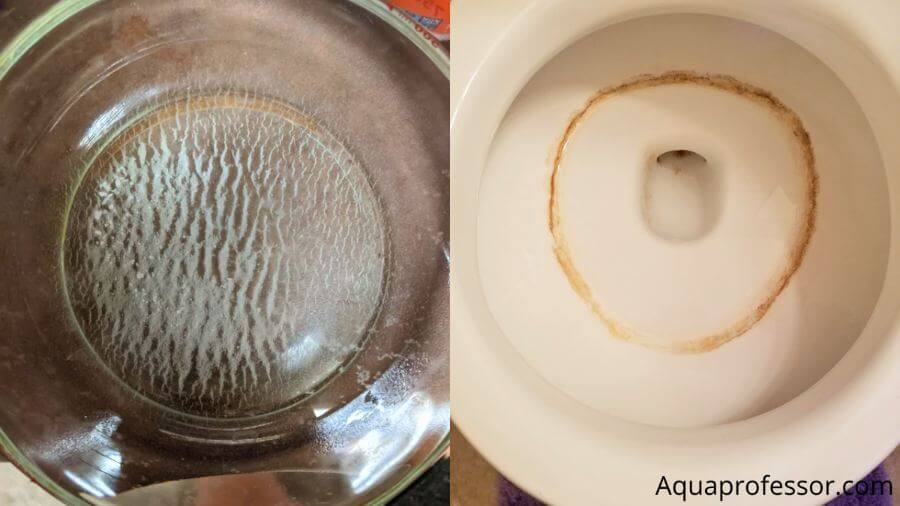
When salt bridging is not addressed, your water softener fails to soften the water effectively. In areas with hard water, mineral deposits such as calcium and magnesium can accumulate over time.
It can form limescale within your plumbing system, affecting appliance performance and potential skin and hair concerns.
With a malfunctioning water softener unable to adequately address these salt bridge problems, hard water’s adverse effects continue to impact your daily life.
🪠Reduced Water Pressure
Reduced water pressure can result from the restricted brine flow into the resin tank due to the hardened salt layer at the top of your softener’s brine tank.
Low water pressure affects your shower experience, dishwashing, and other household tasks.
It directly results from your water softener’s compromised performance caused by salt bridging.
🥏The Brine Tank Appears To Be Full
Even after adding salt, your brine tank may appear full when salt bridging is present.
Salt bridging creates the deceptive illusion of a full brine tank. The top layer of salt hardens into a solid mass while the salt beneath remains untouched.
This misleading appearance can lead to missing salt refills, worsening the issues caused by salt bridging.
Also Read: What Happens If Water Softener Runs Out Of Salt?
💁How Much Salt in Water Softener is Too Much?
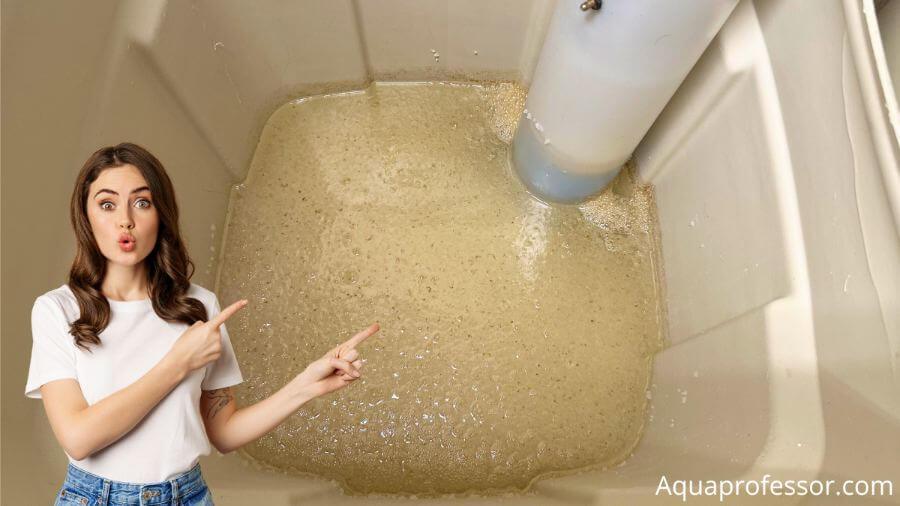
The amount of salt usage that is considered too much for a water softener can vary depending on the specific model and size of the softener.
However, a general guideline is to avoid filling the brine tank with salt beyond 3/4 of its capacity.
Exceeding this limit can lead to salt bridging, inefficient regeneration, and reduced water softening effectiveness.
Pro Tip:
Before topping up your water softener with salt, loosen any salt that may have stuck to the sides of the tank.
It helps prevent salt bridging and ensures that your water softener operates efficiently.
🎯 How To Remove Too Much Salt In Water Softener?
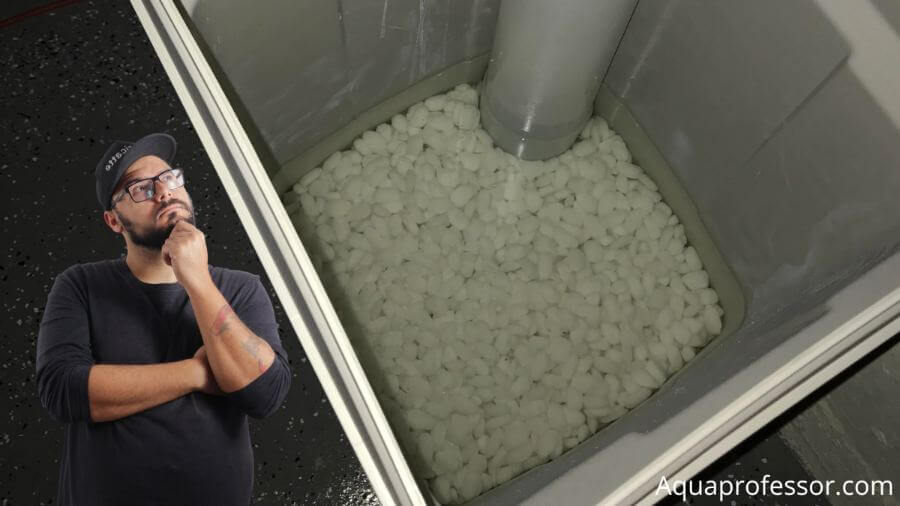
Here are the steps to effectively remove the excess salt:
Tips to Avoid Too Much Salt in the Brine Tank:
💡Too Much Salt In Water Softener: FAQs
Should water be over salt in a water softener?
No, water should not be over salt in a water softener.
Maintaining the salt level at about one-third to one-half full in the brine tank is recommended to avoid overfilling, which can lead to problems like salt bridging and reduced efficiency.
What is the correct water softener salt level setting?
The correct water softener salt level setting is typically one-third to one-half full in the brine tank.
This ensures optimal performance without overfilling.
To determine how much salt is the right amount for your water softener, use this formula:
Salt = N x H x Q
Salt is the amount you need.
N is the regeneration cycle frequency.
Q is daily water use (in gallons or kiloliters).
H is water hardness (in PPM or mg/L).
Why is my water softener suddenly using so much salt?
If your water softener is using more salt suddenly:
Inspect Control System: Look for malfunctions and errors. Repair or replace if necessary.
Clean Resin Beads: Perform a resin bead cleaning to restore efficiency.
Adjust Settings: Ensure regeneration settings match your water conditions.
Check for Leaks: Examine for plumbing leaks to prevent water waste.
Maintenance: Regularly clean, inspect, and replace worn parts.
Why is my water softener making water salty?
If your water softener is making water salty, it could be due to a malfunction in the control system or improper regeneration.
Check for issues like salt bridging or a malfunctioning control valve to address the issue.
Why is my water softener not using salt?
A water softener not using salt may be caused by a clog in the brine tank, a malfunctioning control valve, or a lack of proper water flow.
Check for blockages, clean the tank, and ensure the system functions correctly to resolve this issue.
Adarsh is a Health & Nutrition Sciences graduate with expertise in environmental health. He is associated with ventures like Glacier Fresh Filter and Simpure Filter Systems. Through Aqua Professor, he intends to provide helpful information to every home to help them make smarter decisions.
